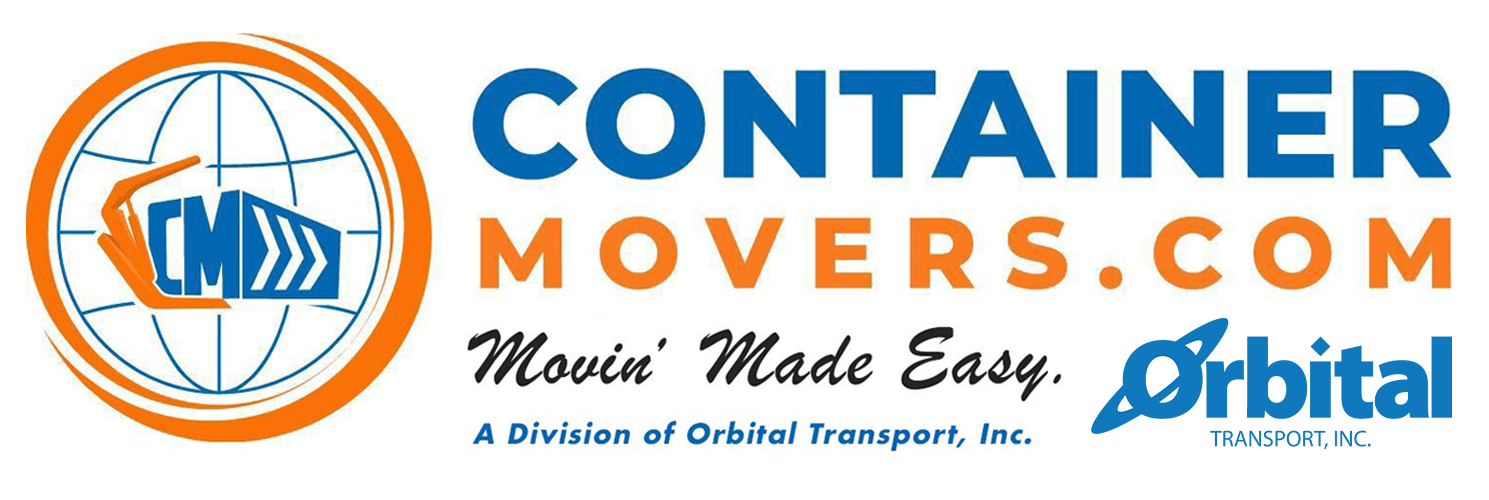Mock up Stage
Industries Utilizing Domestic Shipping Container Moving Services
Container Moving Services by Industry — Secure, Fast, Ground-Level Delivery
At Container Movers we deliver industry-specific container transport and on-site storage solutions built for reliability, speed and safety. Whether you’re moving a home, staging materials at a construction site, managing seasonal retail overflow, or responding to an emergency, our sideloader-equipped fleet, ground-level loading, and logistics expertise minimize downtime, reduce handling risk, and protect your assets.
Nationwide container transport and on-site storage solutions for households, contractors, retailers, manufacturers, government, restoration teams, and events. Ground-level loading, secure units, and logistics expertise to keep your operation moving.

Cost Per Mile – The Predictable Part
Let’s start with the simple part: mileage. Moving a loaded container down the road has a fairly stable price point, and in most situations it works out to an average of $5 per loaded mile. This baseline gives you an idea of what to expect for transport itself.
But that’s only part of the equation. The real swing factor isn’t the drive from A to B—it’s what it takes to safely remove the container from its current position and place it where it needs to go.
Site Conditions – The Biggest Variable
Every property looks different, and containers can end up in some tough spots. Accessibility is by far the most important—and costly—piece of the puzzle.
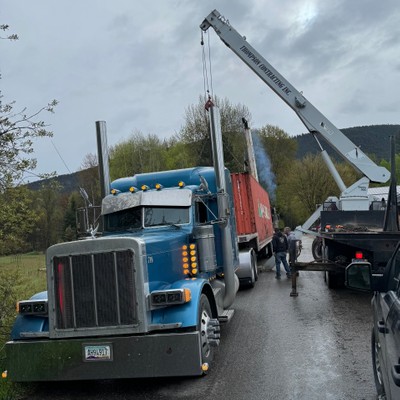
If your box is sitting on the side of a hill surrounded by trees, you’re looking at cranes, rotators, or wreckers.
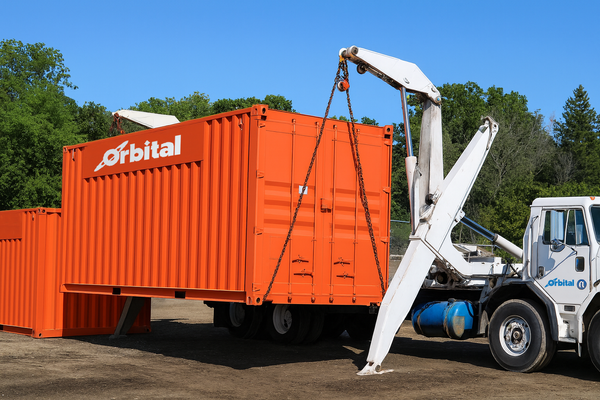
If it’s buried in mud or on soft ground, it may need to be pulled out, and in some cases, unloaded and reloaded.
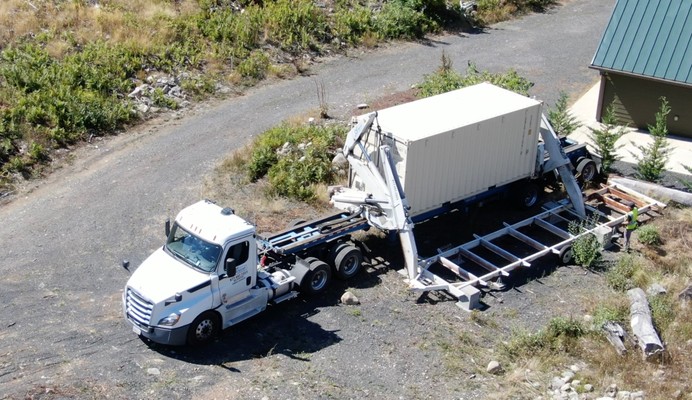
If it’s tucked behind landscaping, close to a building, or under overhead wires, we need to plan carefully for clearance.
These are not insurmountable obstacles. The question is simply which equipment and operators are required to do it safely. And that’s where planning and expertise come in.
How We Analyze a Site Before Moving a Container
One of the biggest advantages we offer is upfront planning. The first thing our team does when someone requests a quote is run a remote site analysis. We don’t just guess. Instead, we:
- Use Google Earth and Google Maps for overhead and street-level visibility.
- Check satellite images to evaluate the terrain.
- Review customer-provided photos when available.
By doing this, we can usually identify the challenges before we arrive. That saves time, prevents unexpected costs, and ensures the right equipment is dispatched to your job the first time.
Equipment Selection – Matching the Right Tool to the Job
Choosing the proper equipment is where most of the risk and cost live. Sending the wrong tool means delays, wasted labor, and higher costs. Sending the right tool means a container move that’s smooth and predictable.
Here’s how we think about equipment:
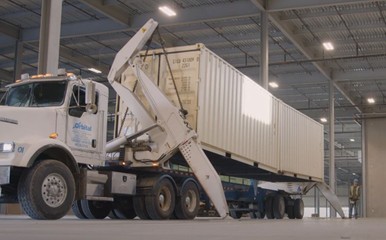
Side loaders
Excellent for ground-to-ground moves where space is reasonable.
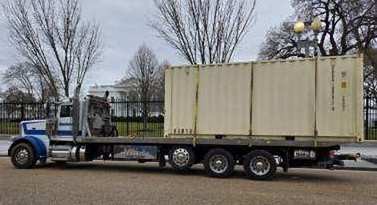
Flatbeds and chassis trailers
The cost-efficient option for longer hauls across states.

Cranes
Necessary when elevation, tight spaces, or overhead obstacles are present.
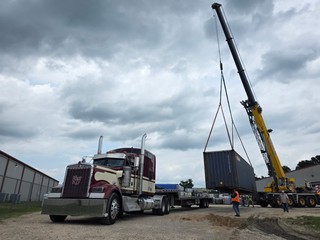
Rotator wreckers
Great for dragging a container out of mud, inclines, or other tight situations.
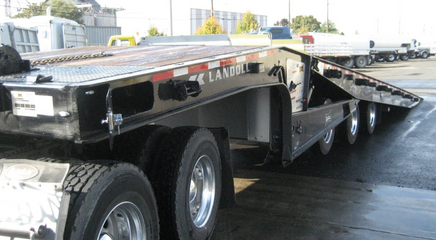
Tilt-back Landoll trailers
Effective if the container isn’t too heavily loaded.
Sometimes, one piece of equipment handles the entire job. Other times, it takes a combination. For example, we might use a side loader to remove the box, load it on a flatbed for a long-haul trip, and then use a crane to place it at delivery. Every move is different, and our operators are trained to make those calls with safety and efficiency in mind.
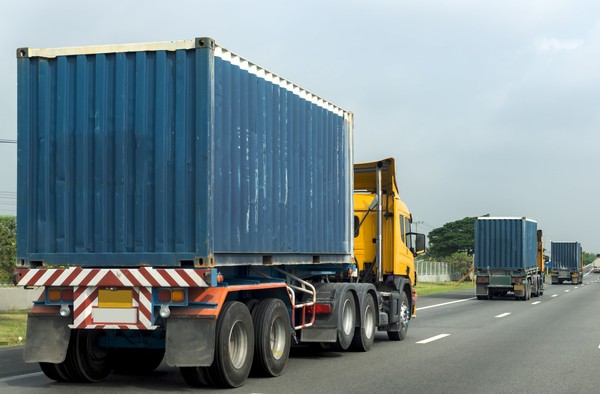
Long-Distance Moves – Balancing Cost and Efficiency
Local moves are often straightforward: the same piece of equipment can handle both pickup and delivery. But once you start talking about state-to-state or cross-country moves, the economics change.
Using a side loader for a long interstate haul isn’t always the most cost-effective approach. In those cases, we often:
- Use specialized equipment to lift the container at pickup.
- Transfer it to a flatbed or chassis for the long-haul portion.
- Offload it at delivery with whatever equipment is best suited for that site.
This hybrid approach keeps your costs down while still protecting the container and ensuring proper placement.
What You Can Expect
Here’s what to keep in mind when budgeting for a container move:
Base Rate:
On average $5 per loaded mile.
Biggest Cost Factor:
Site conditions and accessibility at both pickup and delivery.
What Matters Most:
Using the right equipment for the job.
Our Edge:
A proven process of site analysis, experienced operators, and custom quoting that eliminates surprises.
At the end of the day, moving a shipping container is always possible. It’s just a question of planning, equipment, and execution. That’s where Container Movers comes in—ensuring your container is moved safely, efficiently, and at a price that makes sense.
